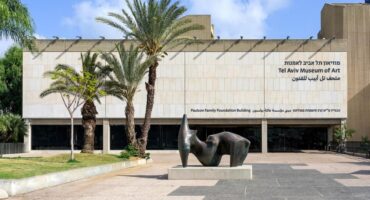Poems printed on small leaflets convey part of the history of the Brazilian Northeast, covering popular tales and other themes from the region
Cordel Literature is typically northeastern material, being one of the legacies left by Europeans at the time of colonization.
These texts consist of poems printed on small leaflets and displayed on clotheslines made of string.. In the old days, there was a whole trade around these stories, and to this day the tradition continues in the Brazilian Northeast, bringing poems that address popular tales, folk legends, social criticism and more.
The origin of cordel poetry date from the Middle Ages, being something very popular in Europe since the 11th century. Society has evolved, but the practice persisted, until Portuguese colonizers finally brought it to Brazilian soil.
This type of literature ended up taking root in the Northeast, with the first Brazilian poets appearing around 1750.
Yet, natives who were literate were a minority at the time. At the beginning, the verses were quoted orally in public squares and accompanied by violas.
Most of the poems were uttered improvised., and remained so until the end of the 19th century, when this type of literature began to attract the attention of academics.
The 20th century marked the beginning of traditional Cordel Literature in Brazil, with its first authors selling printed poetry.
For those who wish to learn more about Cordel Literature and appreciate northeastern culture more, there are some poems that are references in the genre.
Most of them are quite long, but presents in detail how the writing style works and the approach to themes, which varies greatly from author to author. Check out a list of some highlighted poems:
The poet of the countryside – Patativa do Assaré
Patativa do Assaré was a poet from Ceará who was born in the northeastern hinterland, having grown up in the fields and working in the fields since I was very little.
Even though I didn't stay at school for long, studied enough to become literate and began writing his first poems at 12 years.
The poem “The poet of the countryside” tells a little about his youth in the backlands, bringing details about the intense work routine and drawing a parallel with the lives of thousands of Brazilians who spend their lives in rural areas.
The writing is informal and replicates the language vices of the people of the region, bringing more authenticity to the verses.
Evil and Suffering – Leandro Gomes de Barros
Leandro Gomes de Barros is considered the first Brazilian cordelist, title that is honored on the day 19 November, When is Cordelista Day celebrated?.
His work includes more than 240 poems and served as inspiration for other great names of modernism in Brazil, as Carlos Drummond de Andrade.
His poem “Evil and Suffering” movingly portrays the recurring suffering of the residents of the backlands, extolling points such as misery, hunger and the exhaustion of manual labor.
We verses, the poet talks directly to God and questions why the divinity allows his creation to remain suffering until the end of his life.
Sign up to receive Event News
and the Universe of Arts first!
Eat something – Zé da Luz
The poet from Paraíba Zé da Luz was another great name in the genre, publishing all of his work throughout the first half of the 20th century.
His poem “Ai se sesse” departs from the focus of the harsh life of the backlands and brings a story aimed at romance, mixing diverse fantasy elements that were way ahead of their time.
We verses, Zé da Luz tells the story of a couple who lived and died together. Upon arriving at heaven's door, Saint Peter refuses to let them in, creating a discussion resolved in a traditional way of the region: in a fight between fishmongers. Irritated, the man takes a knife and “tears the maw out of the sky”, freeing all the fantastic beings that live there.
In 2001, the poem was honored by the band Cordel do Fogo Encantado, who recited his verses in the song “Ai se sesse”.
The Romance of the Mysterious Peacock – José Camelo de Melo Resende
José Camelo de Melo Resende was one of the greatest Brazilian cordelists, author of one of the most famous poems of the genre: The Romance of the Mysterious Peacock.
The work has been adapted for numerous media, including television, theater, music, cinema and comics, often being combined with excerpts from the classic One Thousand and One Nights, a compilation of tales originating from the Middle East.
The Romance of the Mysterious Peacock is a short story told in verse, telling the story of the Turkish nobleman Evangelista and the Greek countess Creusa, who fall in love platonically.
Mixing fantastic and romantic elements, we follow Evangelista's audacious plan, who builds a mechanical peacock to fly to the top of the tower where his beloved is held prisoner and save her from the clutches of a tyrannical father.
It is the poem, just like the others, They are excellent study materials for those who are studying college of Letters, in addition to serving as a good gateway to northeastern literature.

Text prepared by the Conversion team.



